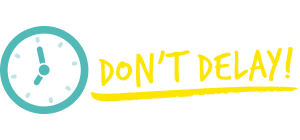- Find an office
-
File Your Taxes
 Find a Location
Find a Location -
Resolve Tax Issues
 Resolve Tax Issues
Resolve Tax IssuesResolve Tax Issues
-
Tax Resources
 See all Tax Help
See all Tax HelpTax Tools
Tax Tips & Resources
- Where's My Refund
- Refund Advance
- Hiring Local Jobs!
- Tax Services
- Promotions & Coupons
- Careers
- Search
- Contact Us
- Feedback
-
 Log in | Sign up
Log in | Sign up

JH Accounts
|
|
Oh no! We may not fully support the browser or device software you are using ! To experience our site in the best way possible, please update your browser or device software, or move over to another browser. |
Filing your taxes
IRS estimated tax payments 2024: What you need to know

Do you need to make estimated tax payments in 2024? In this guide, we'll explain what estimated tax payments are, who needs to pay them, how to calculate your payments, and the best ways to stay on top of your tax obligations throughout the year.
Key takeaways:
- Estimated tax payments are required if your income isn't subject to automatic withholding, such as freelance income or investment earnings.
- If you’re self-employed, a freelancer, an independent contractor, or have a side gig and expect to owe $1,000 or more in tax after credits and withholding, you likely need to make estimated payments.
- Failure to make estimated payments can result in penalties and interest, even if you expect a tax refund.
- Estimated tax payments are due in April, June, September, and January, based on income you’ve earned during the year.
- You can calculate estimated taxes based on last year’s taxes or your expected income for the current year.
- The IRS offers multiple digital payment methods, including online and mobile options, along with mail and cash payments.
- Use Form 1040-ES to calculate your estimated tax payments. Pay using a digital method or sending payment by mail along with a 1040-ES voucher.
- Need help calculating or making your estimated tax payments? Work with a Jackson Hewitt Tax Pro.
What are estimated tax payments?
Federal tax is a “pay as you go” system. As you earn or receive income, you are expected to pay tax as the money is earned. Estimated tax payments are quarterly payments to the IRS (and some states) for tax on income not subject to withholding. This includes earnings from freelance work or self-employment, as well as dividends, interest, alimony, and rent. Income from unemployment and Social Security benefits may also be subject to estimated tax payments, but only if you do not elect voluntary withholding.
Quarterly tax payments prevent you from being hit by one large, shocking tax bill. They also help you avoid penalties for not paying enough tax throughout the year.
Keep in mind that some states require estimated tax payments, too. If state tax isn’t automatically withheld from your income, make sure that you check your state’s tax rules to find out if you’re required to make estimated state tax payments.
Who is required to make estimated tax payments?
If both of the following rules apply, you’re likely required to make estimated federal tax payments:
- After adjusting for any withholdings and refundable tax credits, you expect you’ll owe at least $1,000 in federal income tax for 2024.
- You expect that your total tax credits and withholdings will be less than either 90% of your estimated 2024 taxes or 100% of what you paid in 2023, whichever amount is lower.
Most people who are self-employed or have side gigs are required to pay estimated tax payments, since no tax is automatically withheld from their paychecks, as well as people who make money from investments or rental properties. Corporations that expect to owe at least $500 are also required to pay estimated tax payments.
Are the IRS estimated tax payments mandatory?
Yes, the estimated tax payments are mandatory for income you make that’s not subject to federal withholding (if you meet the requirements, listed above).
What happens if you don’t make estimated tax payments?
If you miss an estimated tax payment, or failed to pay in-full, you may face a penalty from the IRS, called the Underpayment of Estimated Tax by Individuals Penalty, as well as interest on the balance.
The IRS may waive or reduce the Underpayment of Estimated Tax by Individuals Penalty under some circumstances, such as serious injury or illness, or the death of a family member.
Estimated tax payments 2024
When are estimated tax payments due in 2024?
|
If you earned income from… |
Jan 1 – Mar 31 |
Apr 1 - May 31 |
June 1 – Aug 31 |
Sep 1 – Dec 31 |
|
Your estimated tax payments were/are due… |
Apr 15 the same year |
June 17 the same year |
Sep 16 the same year |
Jan 15 the following year |
How to calculate estimated tax payments
There are a couple of ways to calculate your estimated tax payments.
One way to calculate your estimated tax payments is to base them on how much your tax was in 2023, divided by four quarters. That means if your total tax last year was $10,000, your quarterly estimated tax payments would be $2,500. Make sure you consider any tax credits and deductions you took last year that you plan to take again this year.
This method tends to work best for people who have relatively stable income throughout the year. If you’re newly self-employed or in an industry where income is unpredictable , this method may not work for you.
You can also calculate your estimated tax payments based on what you plan to earn. Using this method, you’ll estimate your tax based on how much income you’ve earned so far, and how much you plan to earn for the year. You’ll also need to account for any deductions and credits you plan to take.
This method tends to work best for people with variable income and for people newly self-employed or freelancing for the first time.
Whichever method you choose, Form 1040-ES offers worksheets that can help you calculate your estimated tax payments for 2024.
How to pay estimated taxes
The IRS offers a variety of payment options for estimated tax payments. You can pay weekly, bi-weekly, monthly, or bi-monthly.
Regardless of how often you choose to make your estimated tax payments, you can use several different digital methods to pay, including your online IRS account, IRS direct pay, pay by phone, the IRS2Go app, or by the US Treasury’s Electronic Federal Tax Payment System (EFTPS). You can also send Form 1040-ES and your payment to the IRS by mail. If you prefer to pay in cash, you can pay with an IRS retail partner.
Do I have to file 1040-ES or just make the tax payment?
If you are paying by mail, include a paper Form 1040-ES voucher with your check or money order. The Form 1040-ES instructions will help you calculate your estimated tax payments accurately, so that you can avoid penalties and interest for underpaying your tax and provides four quarterly vouchers for your use.
If you are using one of the many digital methods to make your estimated tax payments, you do not need to file a 1040-ES voucher.
Avoid penalties and interest
No one wants to deal with IRS penalties and interest. But unfortunately, if you miscalculate your estimated tax payments, or fail to pay on time or in full, penalties and interest are likely in your future. The good news? Jackson Hewitt Tax Pros can help.
Estimated tax payments can be confusing, and getting it right is important. You don’t have to figure it out on your own. Work with a Tax Pro to calculate and pay your estimated tax payments. We’ll help you get it right the first time, so you can avoid penalties and interest.
What happens if you can’t afford to pay your estimated tax payments? The IRS offers short-term payment plans for taxpayers who can pay off their tax debt quickly, as well as long-term payment plans for taxpayers who need more time.
Whether you need help calculating your estimated tax payments, filling out Form 1040-ES, setting up payment plans, or figuring out which business deductions you can take, work with a Jackson Hewitt Tax Pro. We’re here year-round and ready to help. Book your appointment today!
Read more articles from Jackson Hewitt
Get a Tax Pro
Our Tax Pros are ready to help you year-round. Find an office near you!

TAXES ARE LATE!
IRS deadline to file & avoid penalties was April 15. We can help! Find a location.
Because trust, guarantees, convenience & money all matter

-
TRUSTED GUARANTEES.
Be 100% certain about your money & your taxes, year after year.
-
NATIONAL PRESENCE. LOCAL HEART.
We’re in your neighborhood & inside your favorite Walmart store.
-
40+ YEARS. 60+ MILLION RETURNS.
The kind of trusted expertise that comes with a lifetime of experience.





